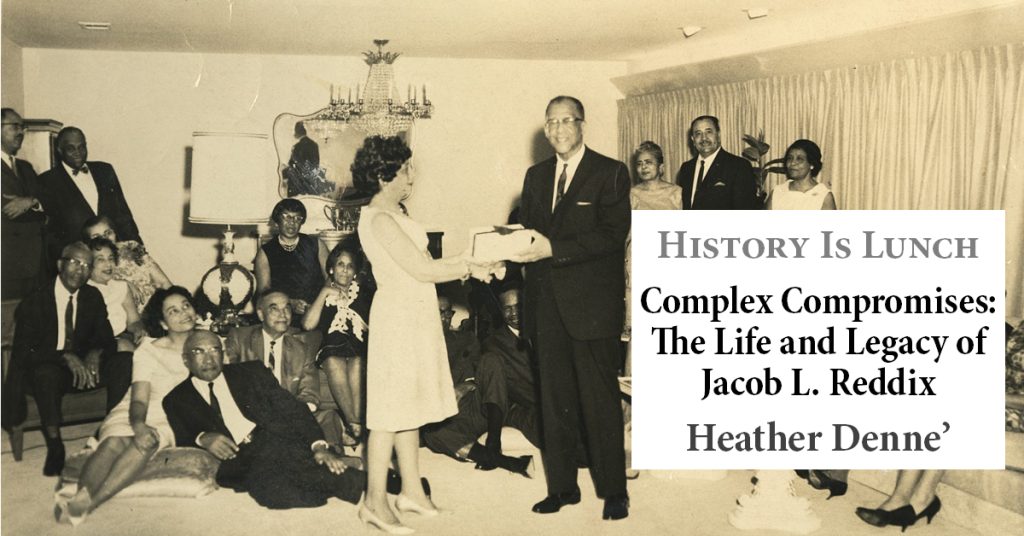Last week, the Mississippi Department of Archives and History featured Dr. Heather Wilcox Denné as its “History is Lunch” speaker. Denné discussed former Jackson State University President Jacob L. Reddix. Although the title of her presentation was “Complex Compromises: The Life and Legacy of Jacob L. Reddix” and covered the JSU Legacy, the Family Legacy and the Retirement Home, we will confine these comments to the JSU Legacy.
In her discussion, Dr. Denné brought forth many informative facts and insights. Like Dr. Lelia Rhodes before her, in the book “Jackson State University: The First Hundred Years,” she pointed out that Reddix was rightly referred to as “the builder.” This was because, during his 27 years as president, he oversaw the construction of 27 buildings on the campus. that was a remarkable feat for a Black president at a small Black college in Mississippi at that time. As Denné indicated, it needs to be understood that the buildings were constructed with such simplicity as to make them more practical and inexpensive than would normally have been the case, “providing more bang for the buck, so to speak.” The H.T. Sampson Library was one example. While she may not have emphasized it, Reddix also directed that most of the buildings be painted “blue and white.” It may have been in part because those were the college’s colors, and at the same time it saved money by being able to get the paint in bulk.
As a part of the legacy, she pointed to the fact that during his administration the state-allocated portion of the Jackson State College budget grew from $10,000 in 1940 to $1,636,370 in 1967. Similarly, the student body grew from 300 in 1940 to 2,500 in 1967.
Dr. Denné interspersed other historical nuggets in the Reddix legacy, such as the fact that the establishment of the Zachery Taylor Hubert Health Center and Hospital was the first of its kind in the Jackson area and only the second hospital for Blacks in the entire state; the Ernest Just Science Hall, with its telescope, was the first such facility in the state and among historically Black colleges.
In addition to the other accomplishments, she praised Reddix as the greatest of the JSU presidents because he was the one who selected Dr. John Peoples as his successor and convinced the college board to appoint him first as vice president, which was as an apprenticeship, and then president.
As regards the Reddix legacy as JSU president, Denné also quoted him from his book, “A Voice Crying in the Wilderness,” explaining that he never engaged in protests, but felt that overseeing more than 5,000 college degrees was more important. That explanation/justification seems to have grown out of an encounter that he had with author and civil rights activist Anne Moody.
In Denné’s talk, however, that position became a point of comment by several listeners in the audience. One individual questioned whether Reddix had success because he could work with white officials or whether he simply went along with the state’s program, regardless. Another individual questioned whether the large budget increases reflected Reddix’s success or if they were merely in response to white officials’ effort to thwart integration through a “school equalization” program. Still, a third individual was adamant that Reddix had been anti-student and anti-civil rights and thus hurt more than he helped. Although that individual did not specifically point out that Reddix had broken up student protests on the campus, expelled Student Government President Walter Williams who led such protests, and suspended the Student Government Association during the height of the Jackson Movement in 1961, several older members in the audience remembered those events.
Based upon the mixed-bag of events, the nature of Reddix’s legacy is in the mind of the recipient of the historical information. Officials in charge of the Mississippi State Hall of Fame have included him among its few Black honorees. Many Black activists, elderly and young, have given him a thumbs-down when it comes to Black heroes. In hindsight, the writer understands that this may be why Dr. Heather Denné titled her presentation, “Complex Compromises.”







